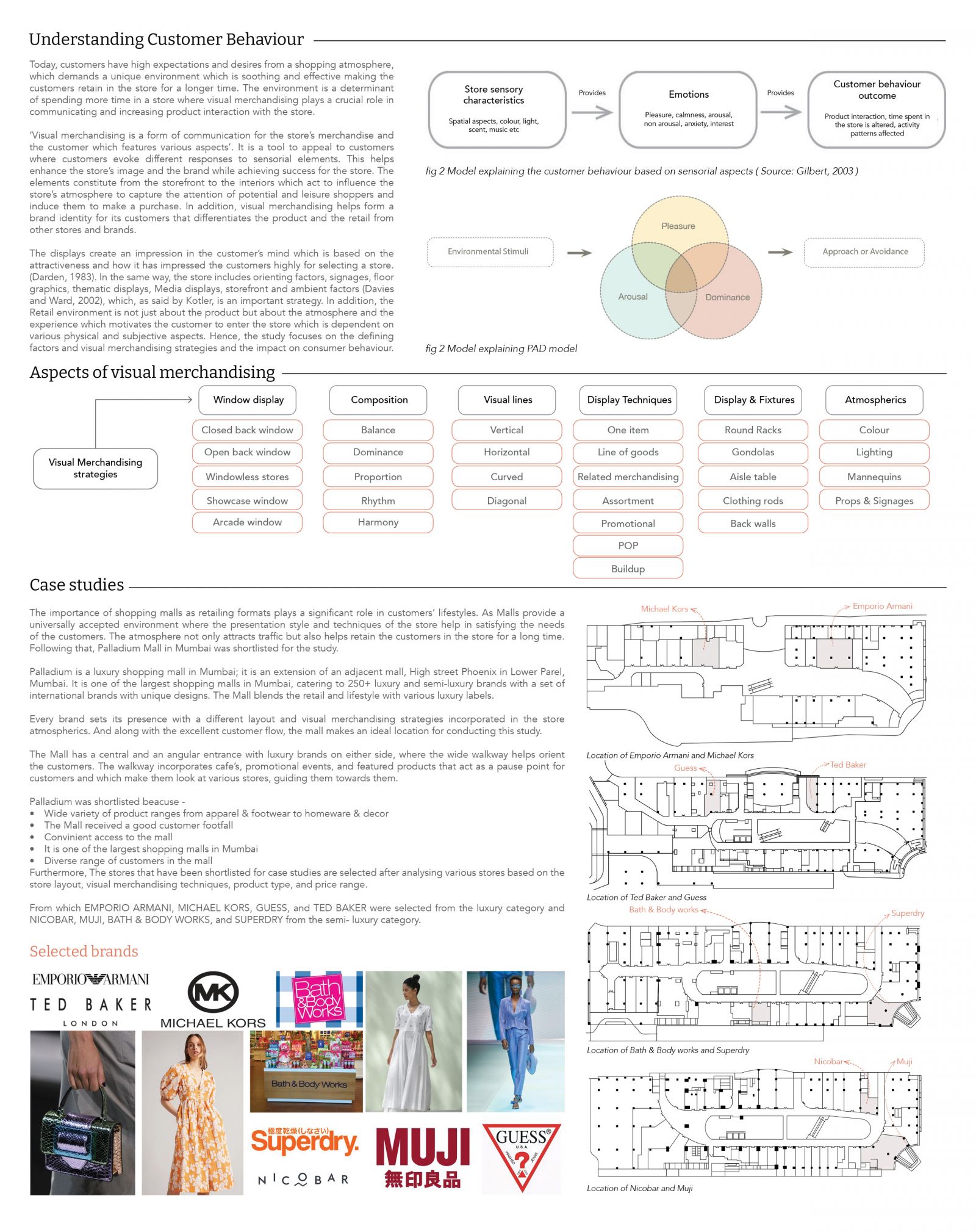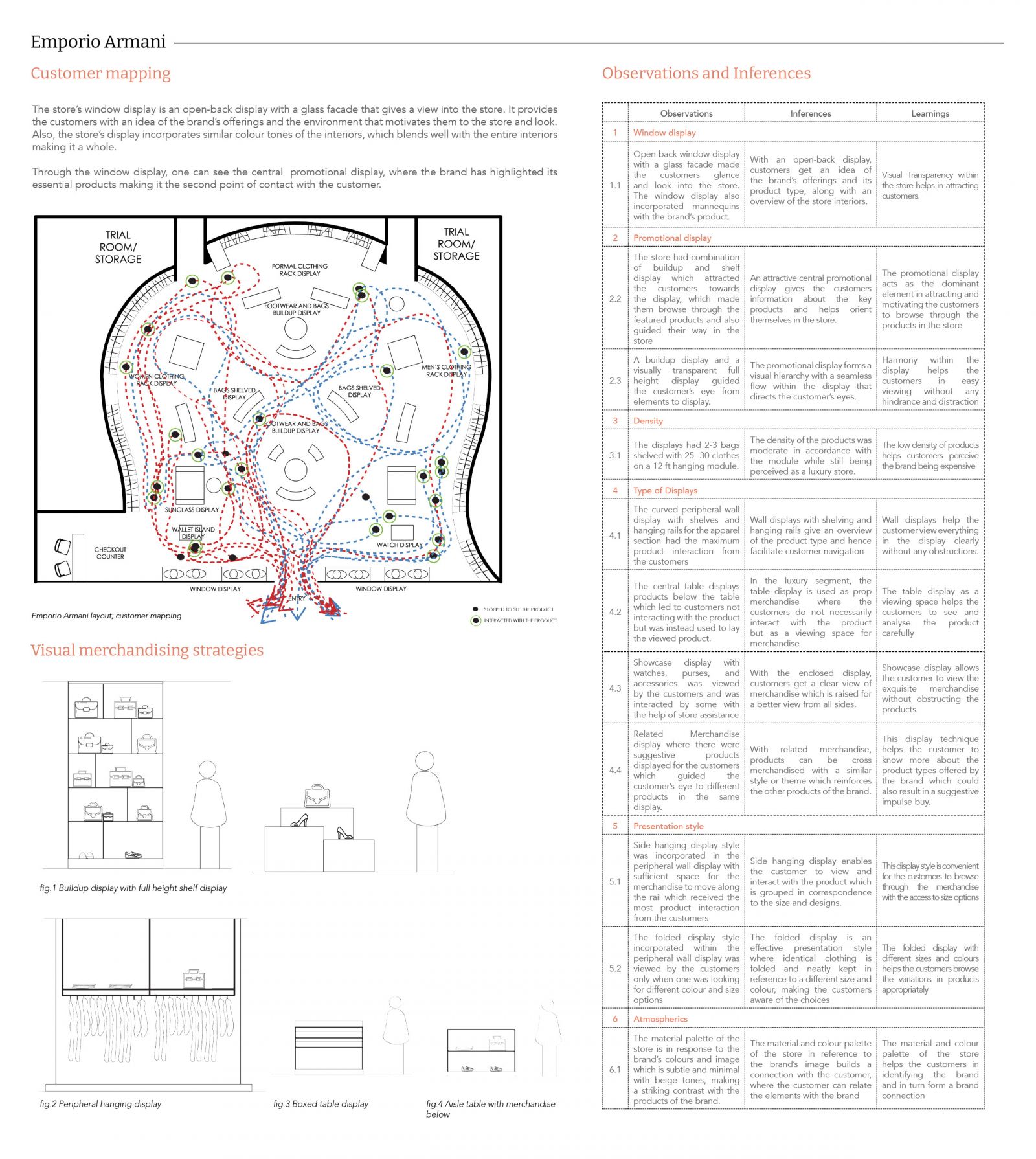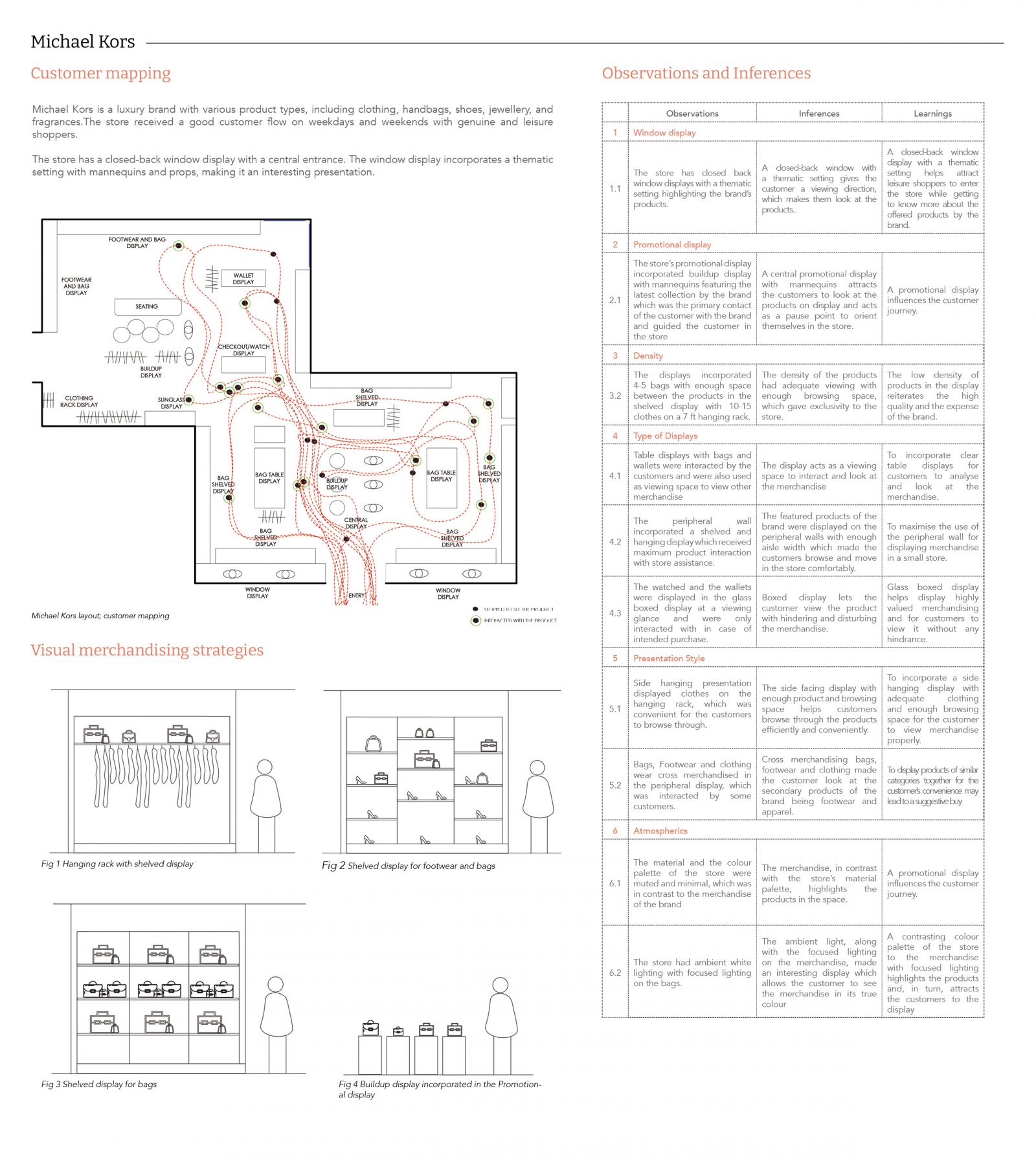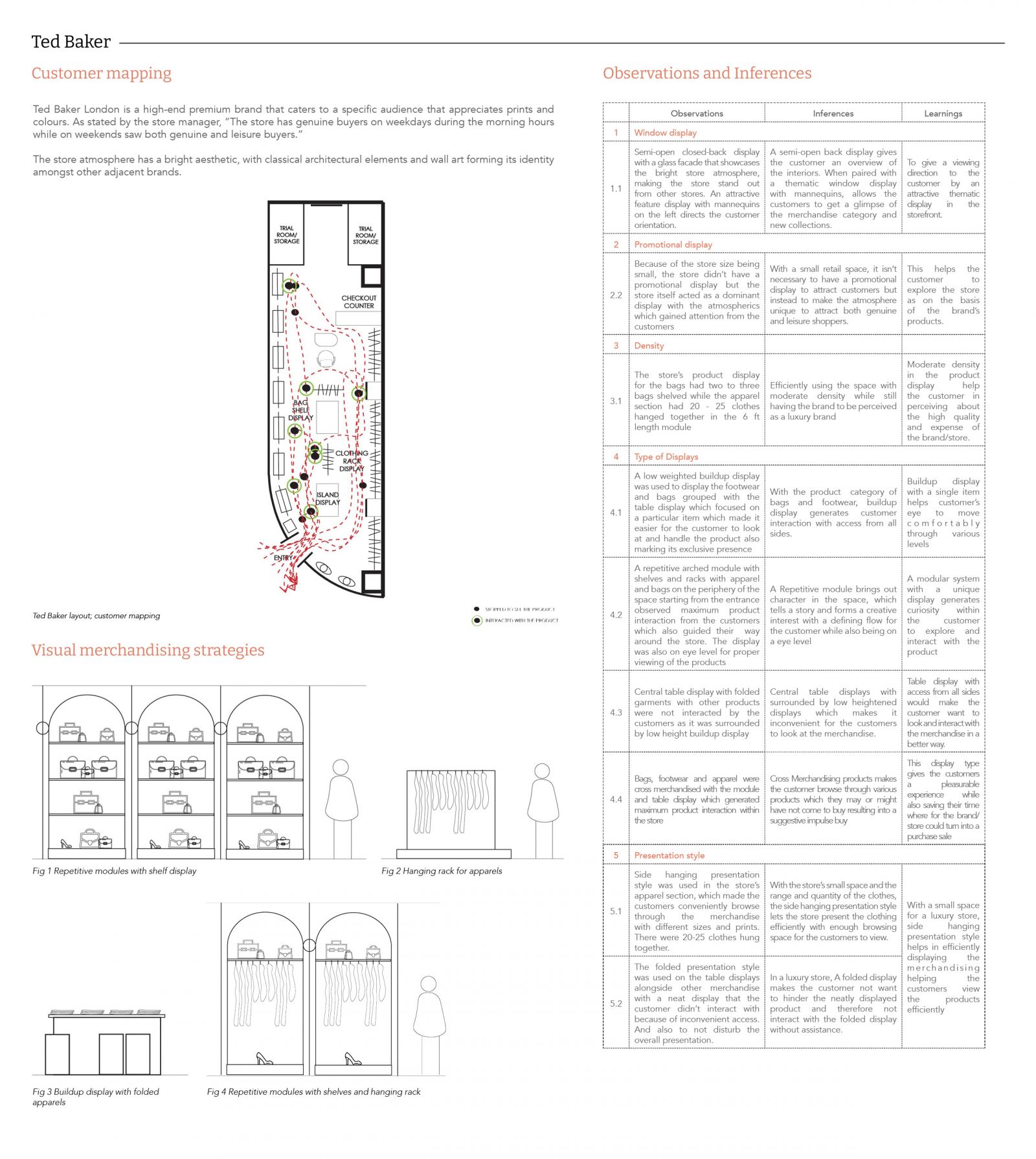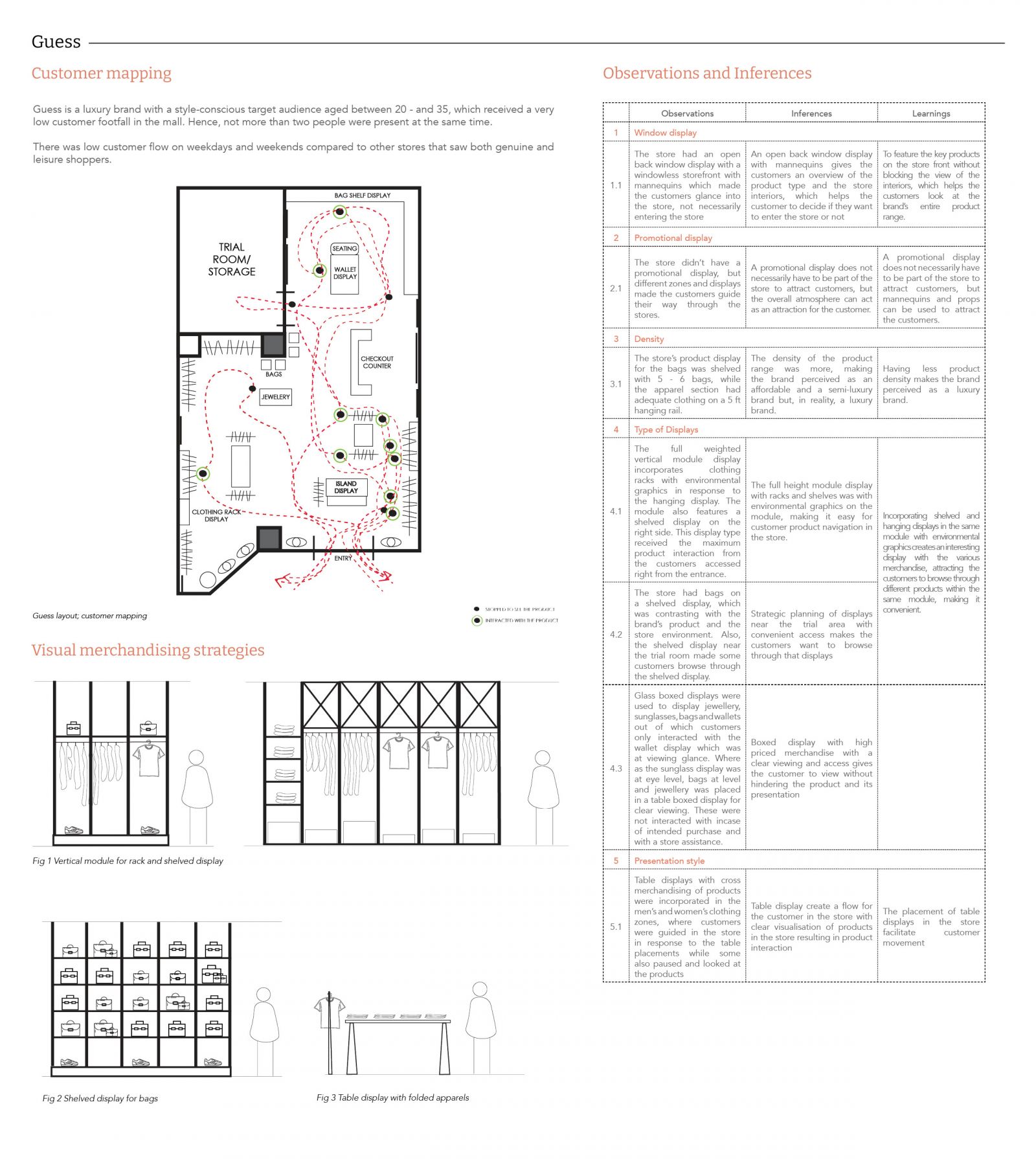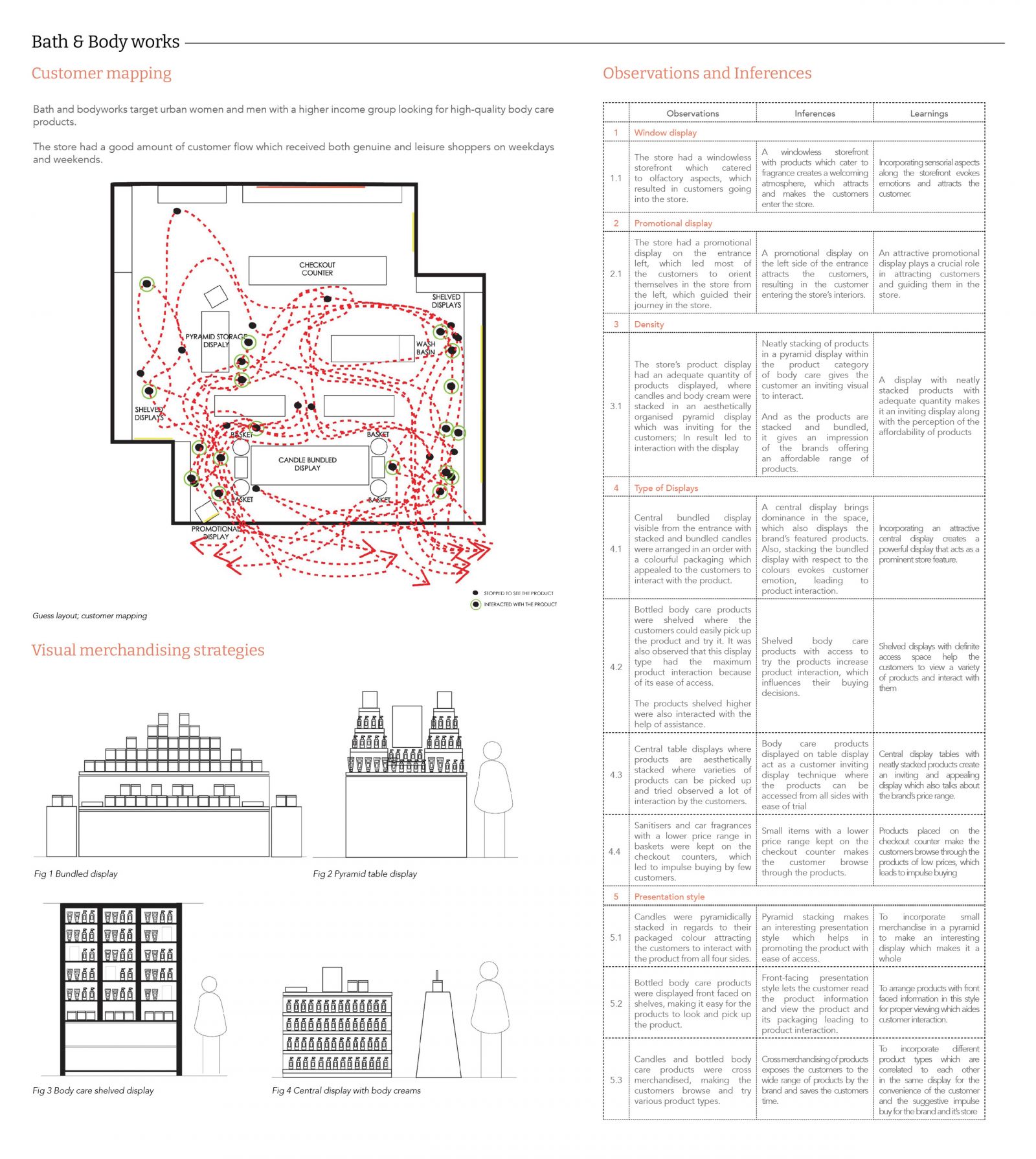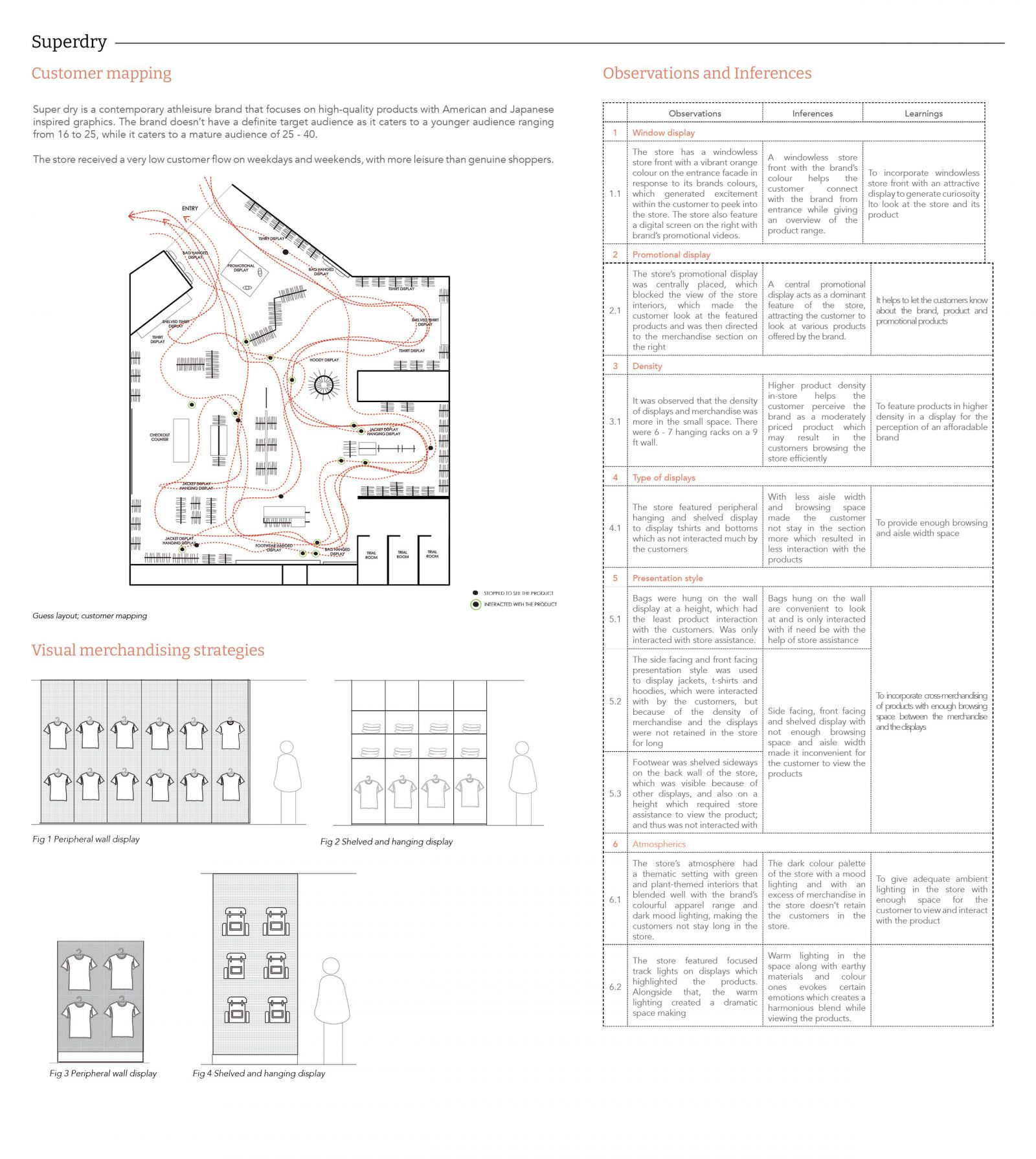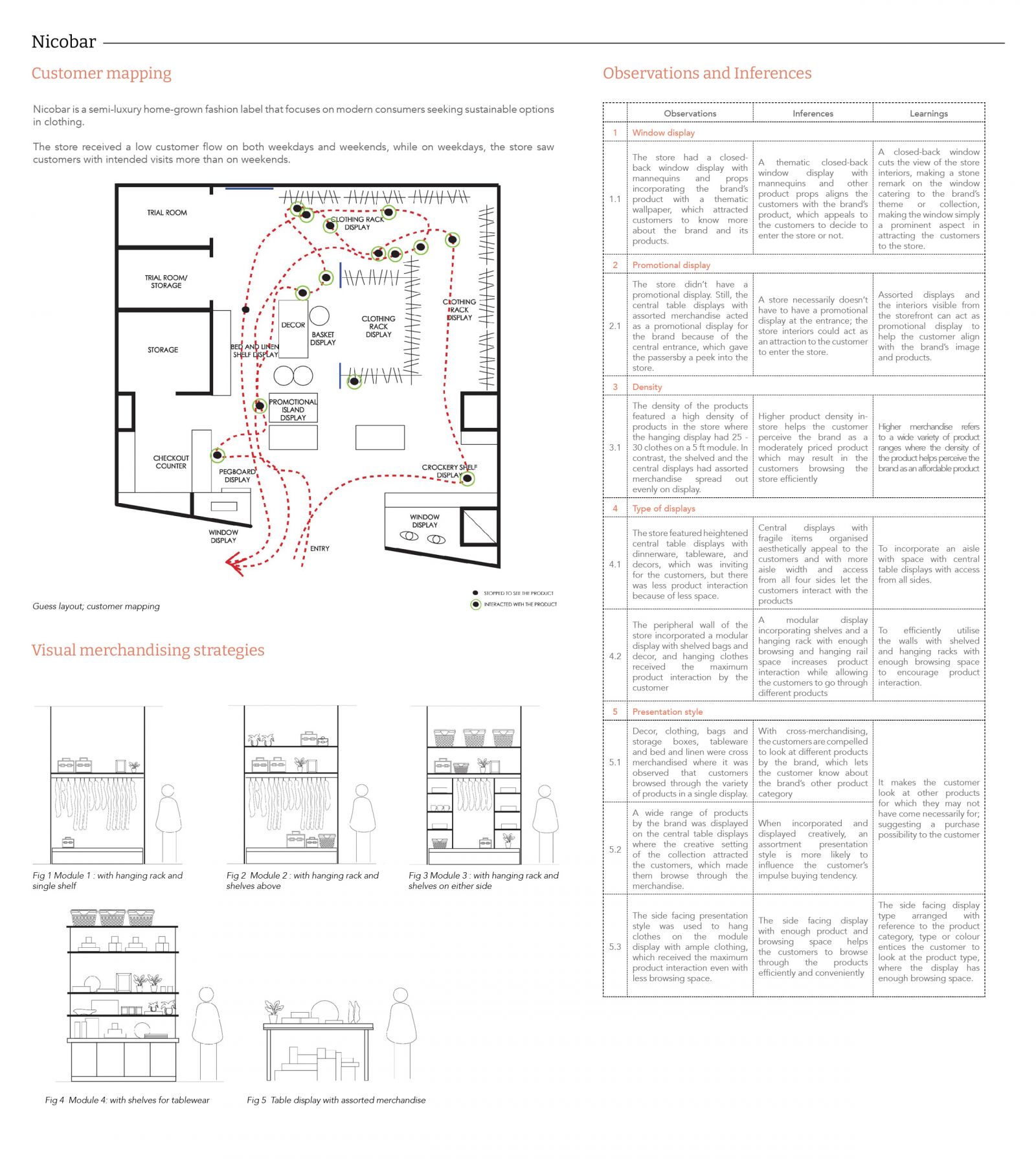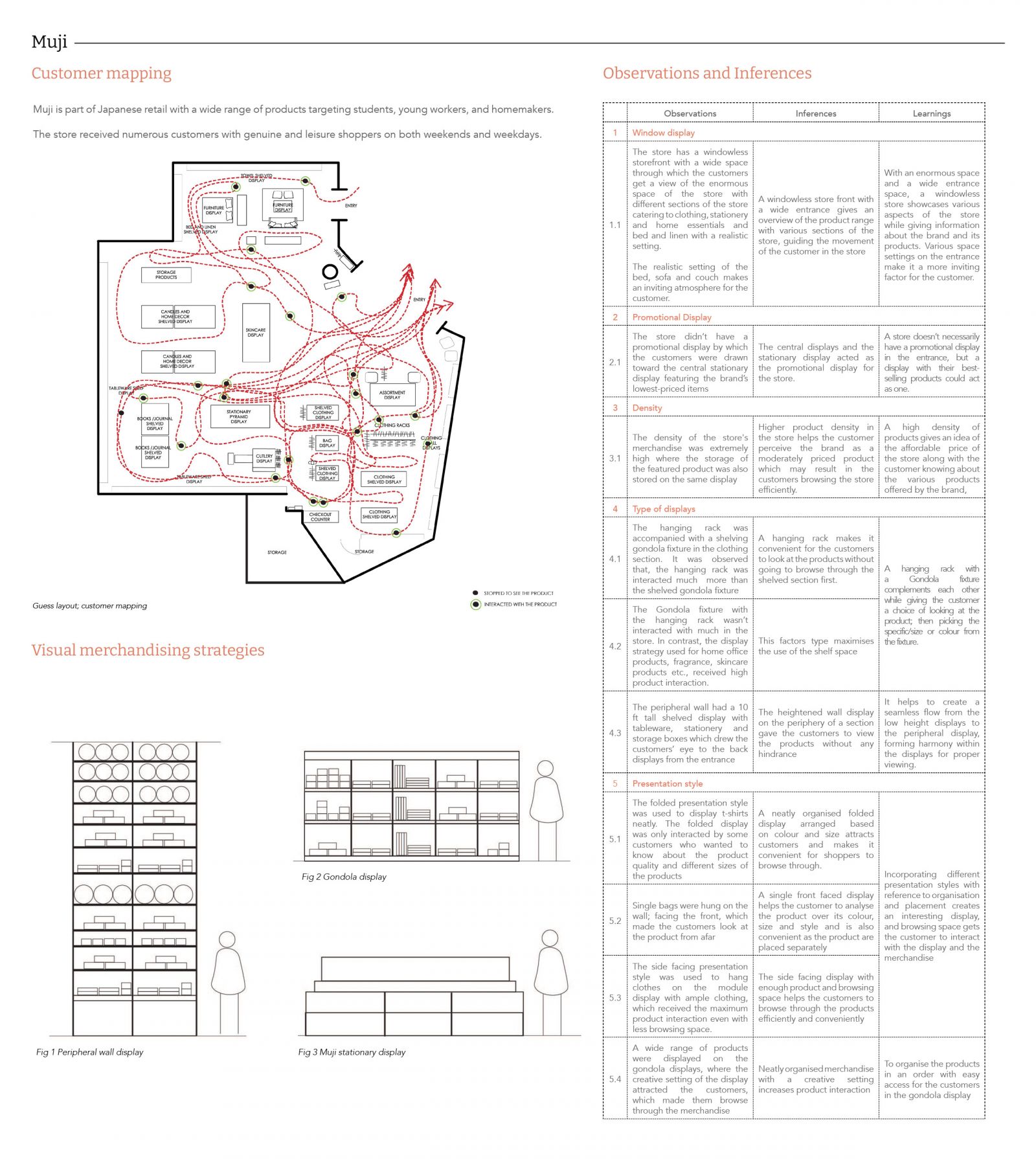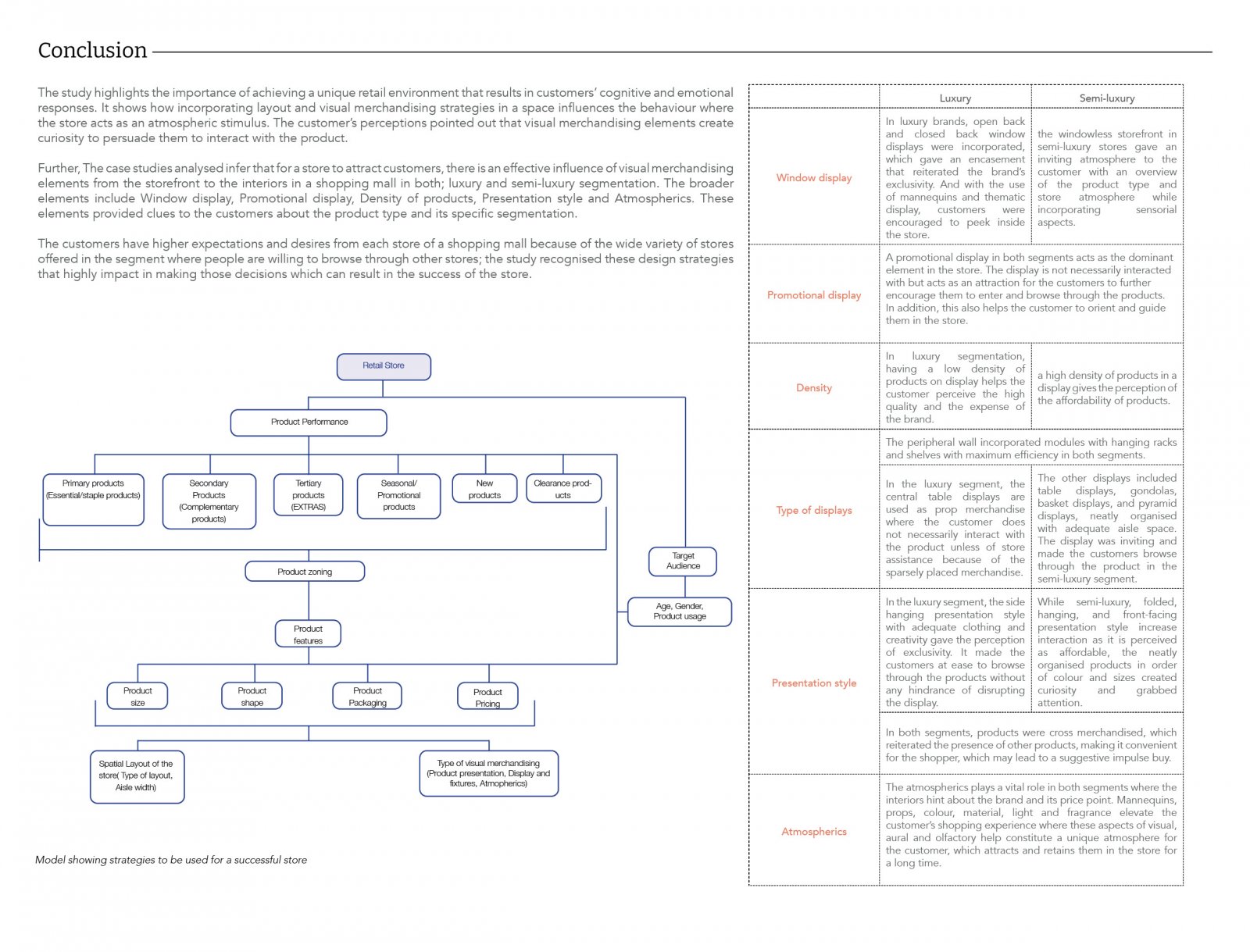- Student NAIR AISHWARYA RAMESH
- Code UI0417
- Faculty Design
- Tutor/s Amal Shah
The retail environment is not just a transactional space but is a language for communication for the brand and its product. So, the space that builds an environment for the customers, which is interactive, builds a relationship between the customer and the brand. It also stimulates positive affective responses that help differentiate one store from another, where stores are trying unique strategies to create positioning tools to enhance the shopping experience and increase product interaction. Also, the customers’ decision making on which store to enter depends on various physical and subjective aspects; where these elements building the store can help make a memorable and unique experience for the customers, which is further analysed in the study.
The framework derived was first done by preliminary research to understand customer behaviour and design strategies which influence the customers to further observe in the case studies.
Furthermore, A shopping mall typology was selected as it caters to various stores with different price ranges and where the environment becomes a crucial factor in matching the customers’ desires with the merchandise and the store. As the mall caters to different kinds of stores with various product types, the methodology of customer mapping was used to analyse and observe leisure and genuine shoppers coming on a weekday and weekends.
Following that, the store category was further divided into luxury and semi-luxury with different product types to study customer behaviour. Luxury stores emphasise design strategies where the customers were mapped discreetly to draw insights into customer behaviour based on the defined strategies. The criteria were selected after a preliminary observation that showed a significant difference in behaviour patterns.
Palladium, a luxury mall in Mumbai, was chosen for case studies with various luxury and semi-luxury stores and a good customer flow, allowing the study to focus more on customer behaviour. It influenced several factors, like the perception image of the brand and the store and the purpose of the visit, thus allowing further study on their behaviour influenced by the design strategies.
The stores were selected based on their product type and the difference in the visual merchandising strategies used. This study observes that the customers respond differently to different aspects that impact the stores’ performance. The observation and analysis of the study focus on how the visual merchandising and layout strategies encourage the customers to browse and interact with the store more.
As there is a relation between the spatial and visual merchandising strategies, this part of the study focuses on the visual merchandising strategies and their impact on customer behaviour. This document is in correlation with “Retail stores in a shopping mall: a study on layout strategies through customer behaviour mapping” to thoroughly understand the design strategies studied and observed in the chosen case study.
Keywords: Visual merchandising, Store design, Atmospherics, Retail and customer behaviour
